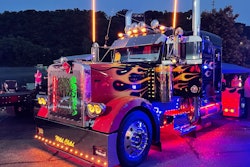The California Air Resources Board (CARB) opened Wednesday its Innovative Small E-Fleet (ISEF) $25 million set-aside within the state's Hybrid and Zero-Emission Truck and Bus Voucher Incentive Project (HVIP).
Launched by CARB, the new program is intended to encourage small fleets to transition to battery-electric or hydrogen-fuel-cell trucks. Privately owned and nonprofit trucking fleets of 20 or fewer vehicles with an annual revenue of less than $15 million are eligible and will have access to funding that can cover costs related to the purchase and operation of eligible trucks. ISEF is administered by CALSTART, a national clean transportation nonprofit consortium.
[Related: Cutting through the heavy-duty e-trucks hype]
Small fleets and owner-operators have often traditionally faced multiple barriers to adoption of newer truck technology, such as high up-front costs, limited financing options, and complex planning for charging infrastructure. CALSTART says it is critical to address these challenges for small fleets because the majority of fleets in California operate 20 or fewer trucks.
ISEF incentive funding will allow small fleet owner-operators to utilize flexible financing, lease, rental, and truck-as-a-service options, as well as offset infrastructure/charger costs, insurance, and fuel costs.

Fleets must work with an approved provider to apply for vouchers. Those providers will work with eligible equipment dealers to request vouchers on the individual fleet's behalf. For example, battery electric and hydrogen fuel cell class 8 drayage trucks are eligible for close to $300,000 per vehicle, drastically reducing upfront costs for California's port truckers to transition to those technologies.
"ISEF's goal is to make it easier for smaller fleets to get past the barriers that they frequently face when transitioning from diesel-fueled engines to electric vehicle options," said Niki Okuk, deputy director of CALSTART Trucks and Off Road. "There are quite a few options in terms of equipment, financing, and planning assistance that fleets can take advantage of in pursuing adoption of electric vehicles; the key first step is showing them they have a resource to help them take advantage of those options."









